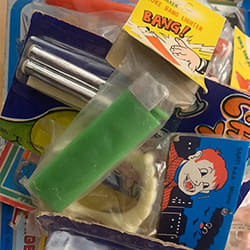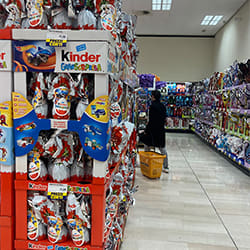
Meanwhile, we had no reason to even know about it way over here in Portugal, and couldn’t figure out why our family back in Japan was making such a big deal of it.
When they told us that the 2023 Mid-Autumn Festival was going to exactly coincide with the full moon, we didn’t know what all the fuss was about. Wasn’t that obvious?
I have always preferred the moon to the sun. It sounds like an excuse from a person who just likes to stay up late at the expense of their health, but I’m always gazing at the moon—especially if it’s full. It puts me in such a good mood that I’ll be up trying my hand at making dumplings or something. So I knew that what the Japanese traditionally call the “mid-autumn moon” referred to the one that appears on the 15th day of August on the traditional calendar. Although I also know that the old calendar doesn’t line up with our modern one, I was sure that they adjusted it by making the day of the Mid-Autumn Festival fall whenever the harvest moon was actually full.
That’s not quite true, though. The old Japanese calendar put the first day of the month at the new moon, meaning that it would be full on the 15th. But it doesn’t always take fifteen days for the moon to get full, so it could occur anywhere between the fourteenth and seventeenth day of the month under the old calendar. The offset between the official day of the full moon and the actual full moon is due to the fact that the moon does not take a set amount of time to orbit the earth. If anything, it was relatively rare for the full moon to actually fall on the 15th of the month under the old calendar.
This year, September 15 coincided with the first day of the eighth month of the traditional Japanese calendar, making September 29 the fifteenth day and the day of the Mid-Autumn Festival—exactly matching the day of the actual full moon. This has happened for three years in a row now, but apparently it will be seven years before it happens again.
My eyesight’s not that great anymore, so the moon looks full to me for a few days on either side of the exact full moon. So I’m going to be seeing a full moon on the day of the Mid-Autumn Festival for some time.
That reminds me—we had a blue supermoon this year, too. Supermoons occur when the moon is full at the same time it is closest to the earth.
As the moon orbits the earth along its elliptical path, the distance between the moon and the earth changes due to the gravitational pull of the sun and the earth. During a supermoon, the moon looks 14% bigger than it does when it’s farthest from the earth, but NASA says that that difference is equivalent to the difference between the size of a quarter and a nickel. It’s also 30% brighter.

Source: NASA
For me, the moon always looks bigger at the horizon than it does in the sky whether it’s a supermoon or not—so I’m not sure how impressive the 14% increase in size is. I definitely notice the increased brightness, though.
On top of that, a “blue moon” is when we get a full moon twice in the same month. This year, the blue moon and the supermoon overlapped, creating a blue supermoon. Incidentally, the term “blue moon” apparently has nothing to do with the way the moon looks—though to me, it did seem a brighter blue-white color than a typical moon. Like a fluorescent lamp hanging in the sky.

The super blue moon from my yard
The Perseid meteor shower in August also coincided with the new moon this year, creating ideal nighttime viewing conditions. I guess it’s just a wonderful year for enjoying the night sky.
It’s exciting to think about the next beautiful nighttime show awaiting us.

The Big Dipper over the town soccer field




























































